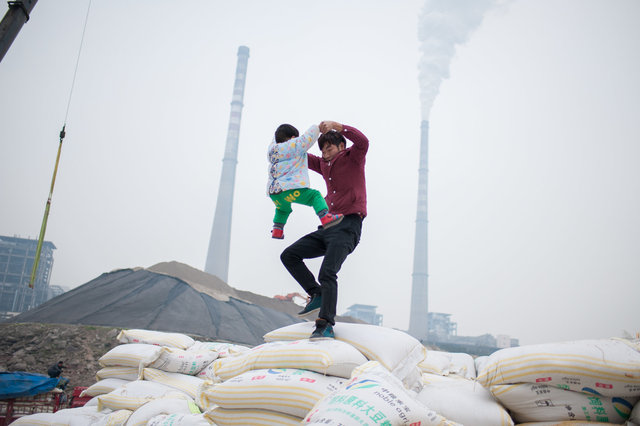
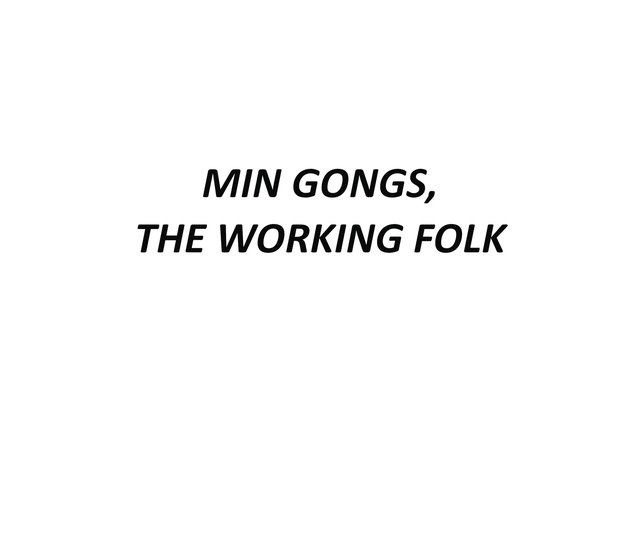
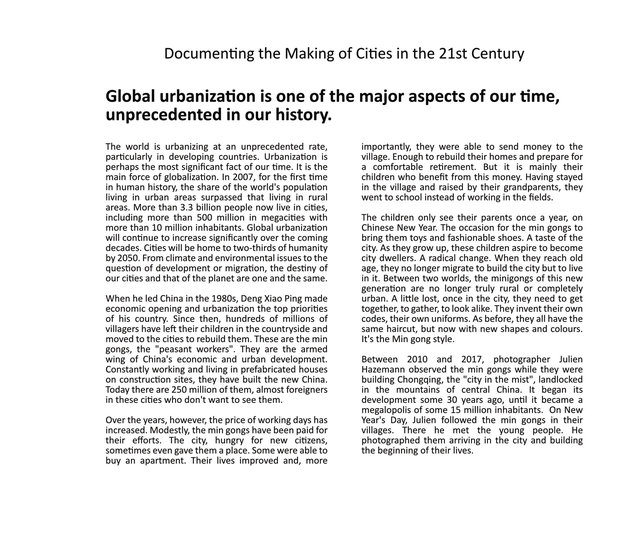

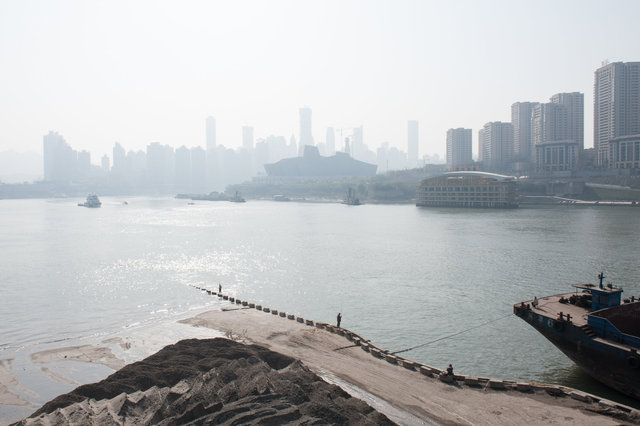
Residents of Chongqing fishing in the Yangtze in front of the city's new opera house and the skyscrapers of Jie Fang Bei.
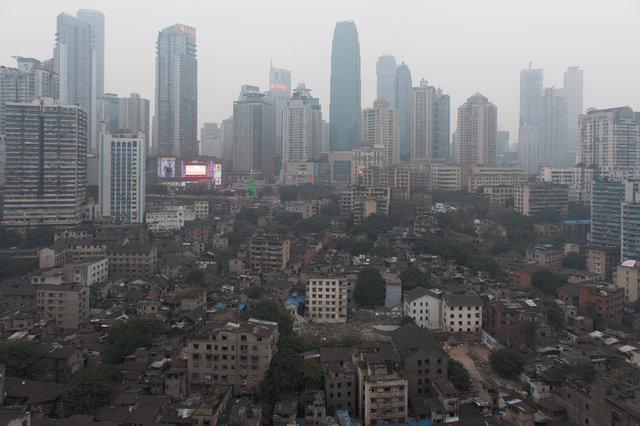
In the foreground, the Shi Ba Ti district (in 2013), overlooked by the skyscrapers of Jie Fang Bei. The construction of these buildings monopolized thousands of min gongs. Shi Ba Ti, the historic centre of Chongqing, has since been demolished.
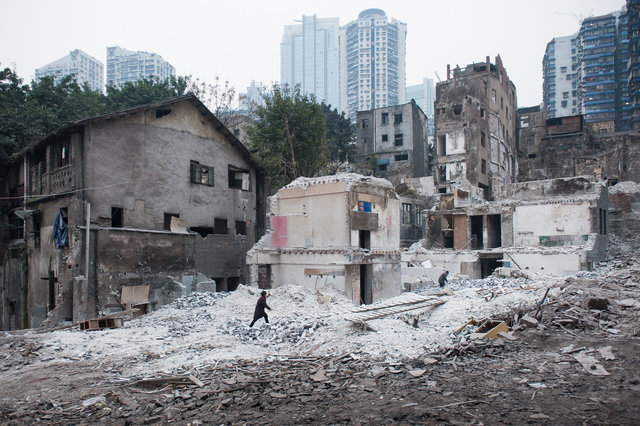
Buildings being destroyed in Shi Ba Ti, 2013. Shi Ba Ti was the historic heart of Chongqing, and one of the last old neighborhoods to be demolished. Rather than a heritage site, Shi Ba Ti was seen as a symbol of the underdevelopment that its inhabitants were in a hurry to leave in order to integrate into modern China. Since then, the neighbourhood has been razed to the ground.
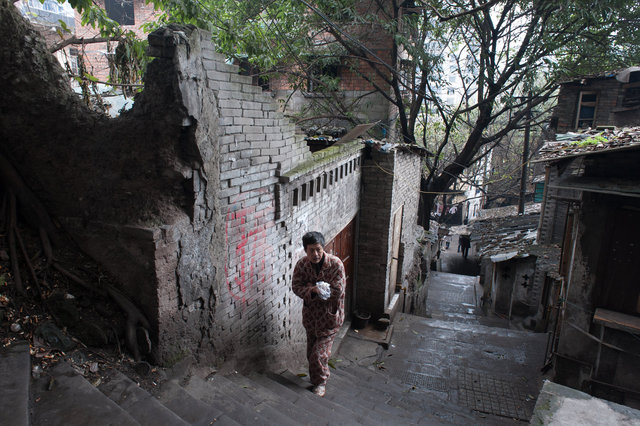
One of the last inhabitants of Shi Ba Ti.

Li Jiabao demolishing an old house in the Shi Ba Ti district. Li Jiabao is a migrant “peasant worker”, who comes from Guanguan, Deng Xiao Ping’s native village, in the Sichuan Province.
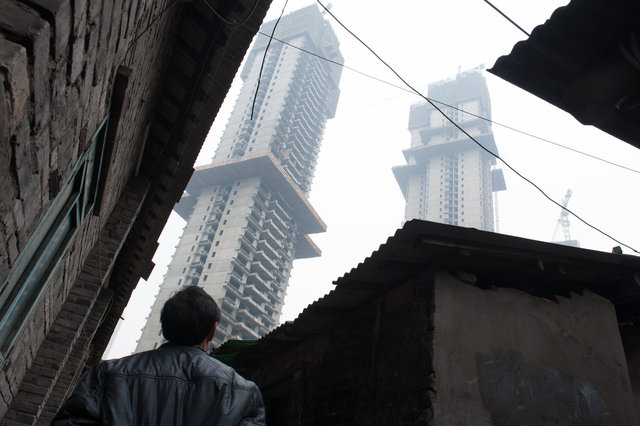
An inhabitant of the Danzishi port district, in front of Shi Ba Ti, watches towers growing.

The Hanghuayuan Bridge in the midst of construction, in 2013. Its inauguration, along with that of a new subway line, occurred one year later. In 1990, four million people was living in Chongqing. By 2020, there are nearly 16.

Min-gongs working on a construction site in Yuzhong district, near Shi Ba Ti. Since the 1980s, the min gongs have been the mainstay of China's economic and urban development. There are now estimated to be more than 250 million, most of them working on construction sites and in factories.
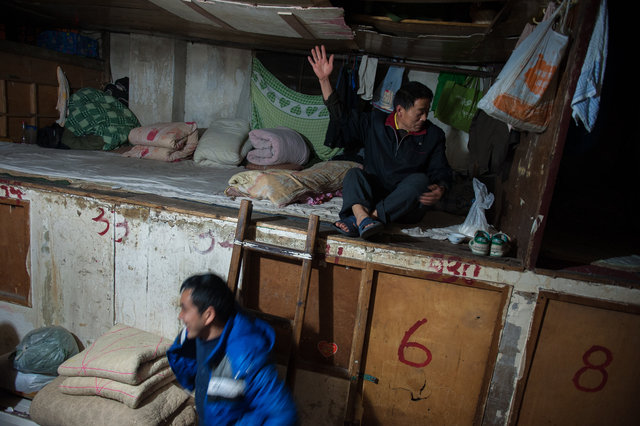
Two min gongs are getting ready to sleep in the dormitory of the Old Lady Hostel ("Laotaipo Hostel") in Shi Ba Ti, where the night costs seven kwais, the price of a bowl of noodles in the street. Since most inhabitants left Shi Ba Ti, many buildings have been transformed into hotels / dormitories, turning the neighbourhood into one of the “gateways” to the city for min gongs.
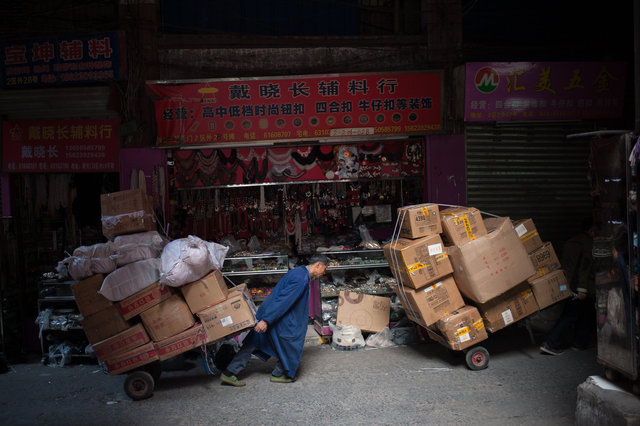
A min gong working as a "bang bang" delivers goods in the Chaotianmen shopping district.
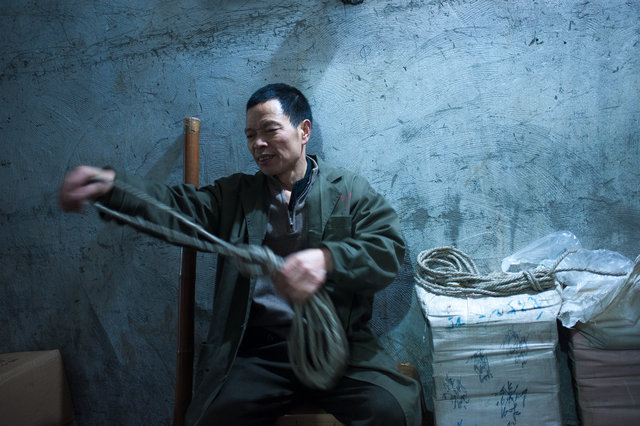
Li Wenyin prepares his "bang", the bamboo stick he uses to transport goods. Wenyin, a fifty-three-year-old min gong, has been working as a bang bang, the porters of Chongqing, since he left his village twenty-five years ago. The bang bang trade is one of the lowest on the social ladder. Only min gongs still accept to do it. They are disappearing, replaced by modern logistics networks.
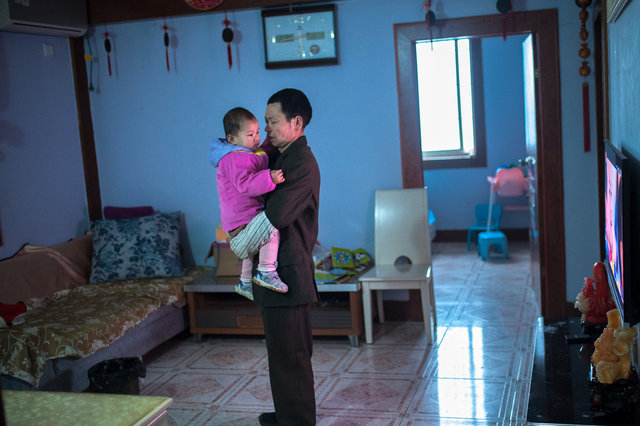
Li Wenyin with her granddaughter Ruoyou. He lives with his wife, son, daughter-in-law and granddaughter in the apartment he bought six years earlier, when his son got married. It will take him twenty years to pay it back. When he will retire, he plans to let it to his son and return to Guangan, his home village.

View on the Yangtze River at night from Wenyin’s apartment, the bang bang Li. Wenyin’s neighborhood is undergoing a deep transformation, and an increasing gentrification. It is the heart of Chongqing.
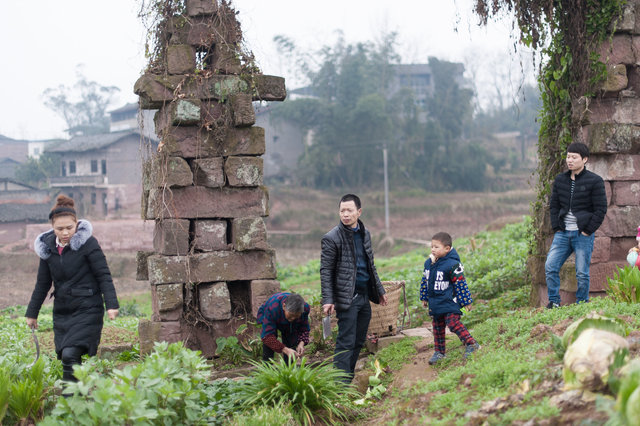
Li Wenyin and his family on his plot of land in Guangan, his native village during the New Year celebrations. Wenyin only returns there on this occasion, once a year. It is the only time he can rest and be reunited with his family. Wenyin arrived in Chongqing in the nineties at the age of about thirty. Until then, he had only worked the land. The income he earns from his work in Chaotianmen allows him to live much better than the peasants left in the village. When he will retire, he plans to move back to Guangan. He still feels like a peasant.
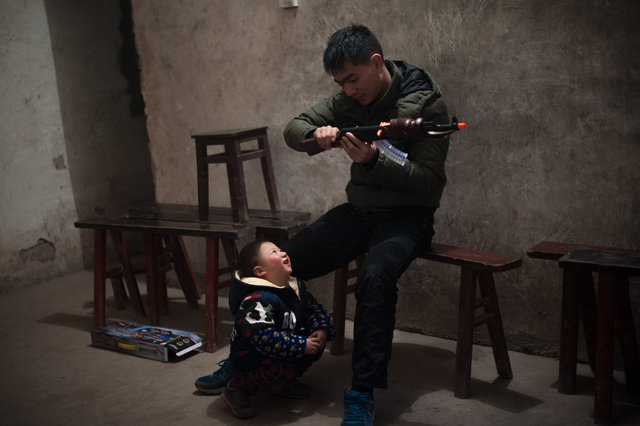
Li Gan, Li Wenyin's nephew, playing with Liu Sijiie in the family home in Guangan. Every year, Li Wenyin brings toys, clothes and a taste of the city to the children, most of whom stay in the village all year round with their grandparents.

He Long and his daughter Ying at the Guangan amusement park. Ying lives in the village with her grandparents. She only sees her father once a year, on New Year's Day. He is almost unknown to her. He Long's parents were also min gong before they retired and took care of Ying. He was also raised by his grandparents. Today, he doesn't share much with his parents.
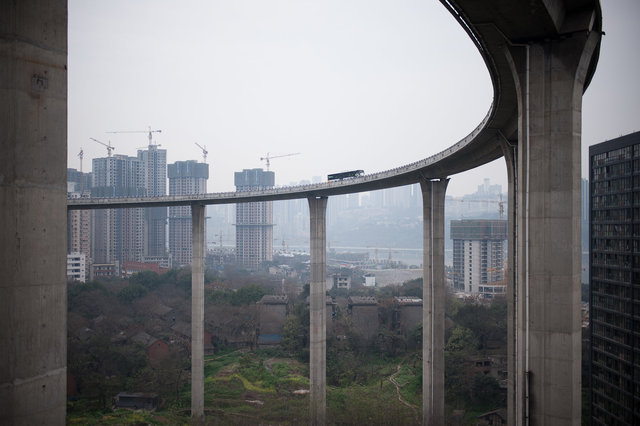
A motorway interchange in Nan' an district, in central Chongqing.
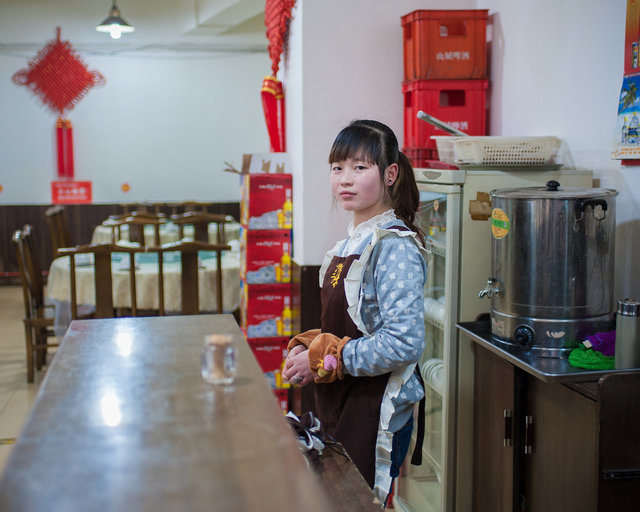
Li Beina in the restaurant where she has been working for the past six months, when she arrived in Chongqing from her home town in Sichuan.
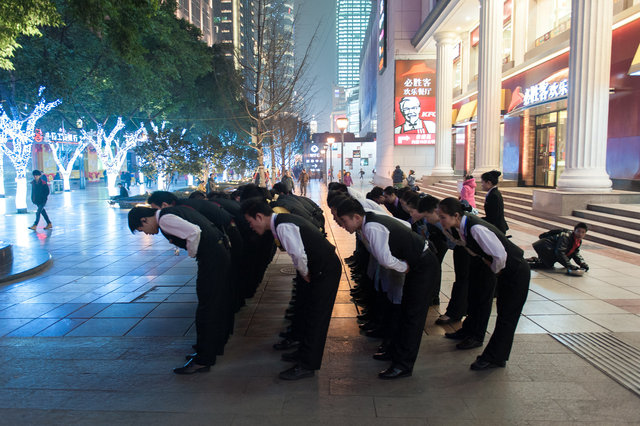
Employees of one of Jie Fang Bei's Pizza Hut when they take their shift. Rural youth prefer waiter or cook jobs to work on construction sites, which are more tiring and messy. Further away also from the city lights.
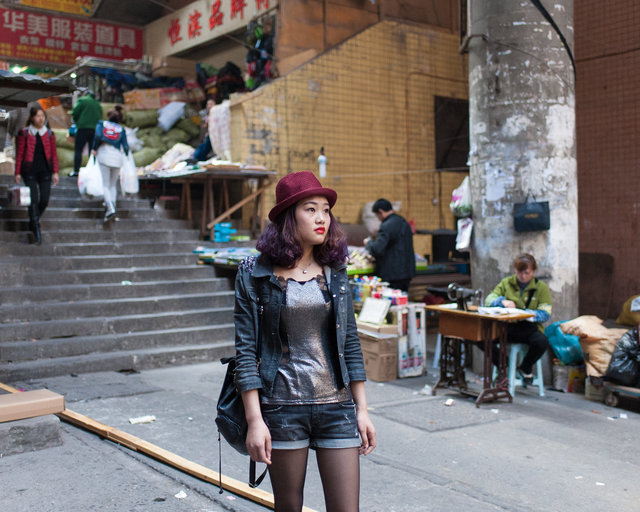
Lily in the shopping district of Chaotianmen where she came to buy wholesale clothes. Lily had left her small town in Sichuan province four years earlier. She wants to "be a part of Chongqing," but she still finds it difficult to feel at home there.
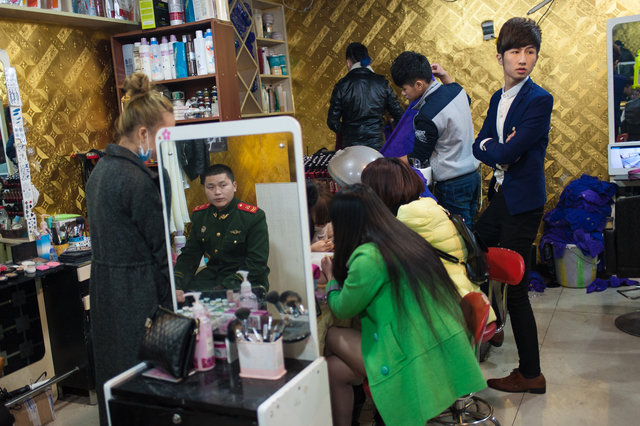
He Long's hairdressing salon in the early evening is a meeting place for Jie Fang Bei's trendy young min gongs, most of whom work in KTV and dance clubs in the neighborhood.
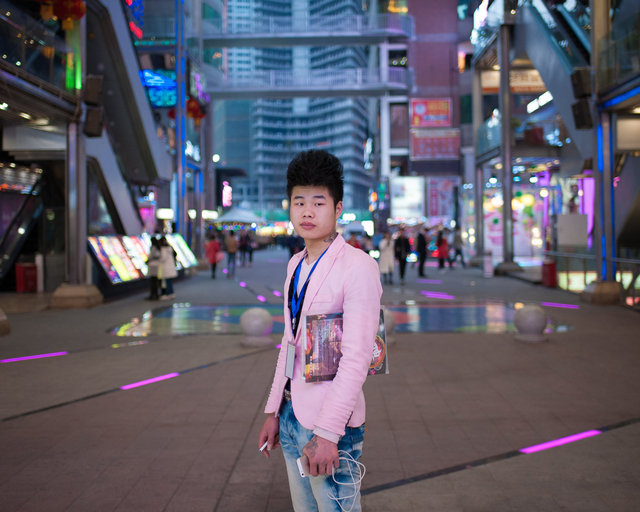
Shi Kun goes to work. He is employed in one of the dance clubs of the Deyi fashion mall, a shopping center that young rural and trendy migrants like him frequent a lot.
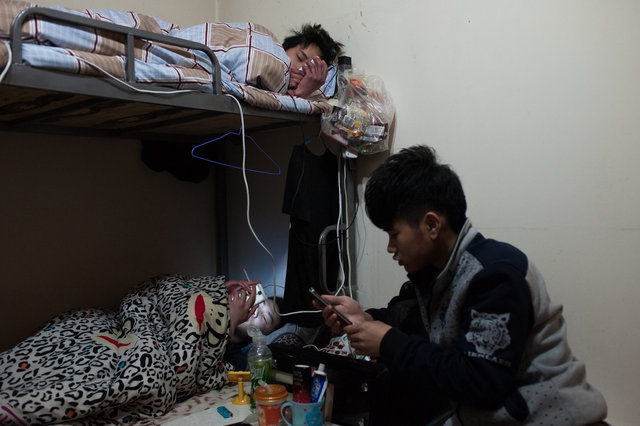
Wang is seventeen years old. He and his two colleagues work in He Long's hairdressing salon. In addition to the wages that Long pays them, he accommodates them. The apartment is one of the symbols of modern and urban life. It is a considerable improvement compared to rural living conditions. But it can take on the look of dormitories, like those in which their parents lived, the min gongs of the first generation.
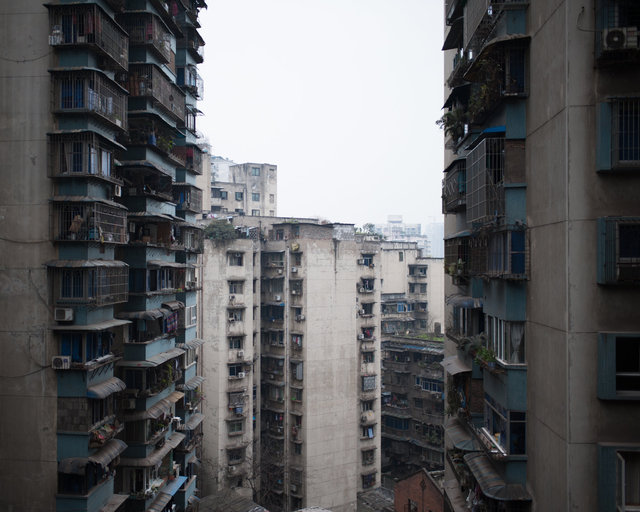
In thirty years, tens of thousands of towers mushroomed in the city of Chongqing, that had only known wooden houses without running water. And yet, the contrast with the rural areas is even more striking. For the young min gong, it is a radical jump into modernity.
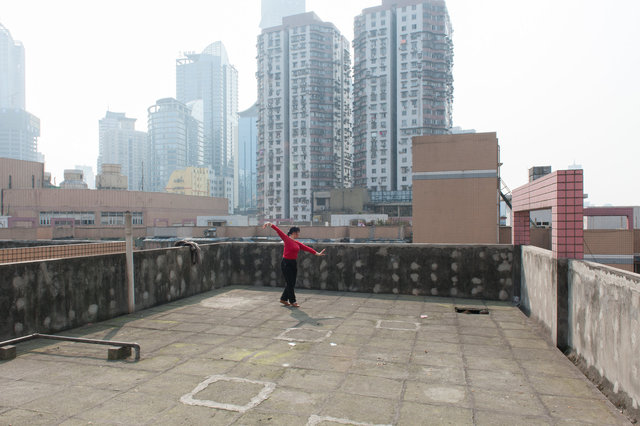
A Chongqing resident practices dance moves on the roof of her building where live min gongs and city dwellers.
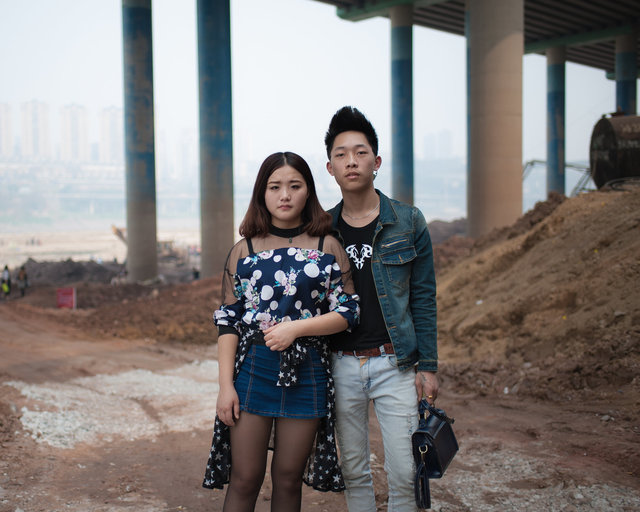
Xuan Xuan and Hu Zhongjian are employed in a hotel in Chongqing. They're min gong's children. They met in the village they came from. Their parents' dream is to have a beautiful retirement in the countryside. Theirs is a family life in the city.
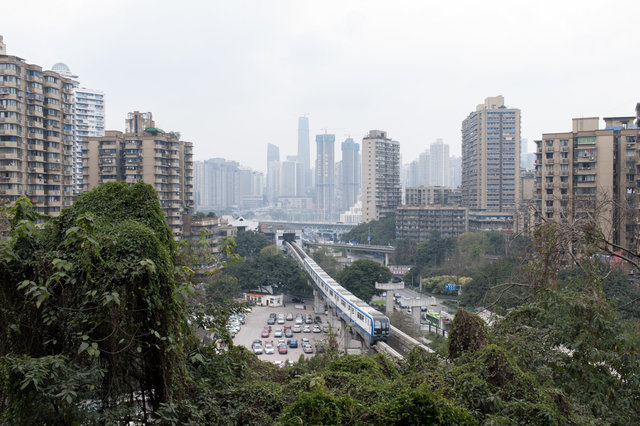
The Daping district is located at the edge of the Jiolongpo district which underwent intense urbanization over the past years. Here, towers replaced the State Factories, and drew out the working-class who since reconverted, often with success, to trade businesses. Then, the min gongs came to build and inhabit the new city.
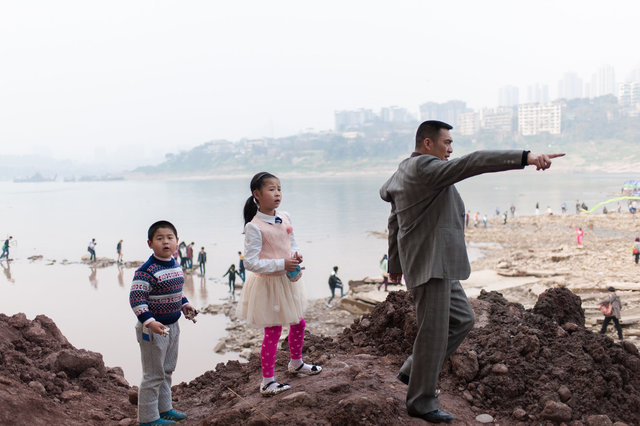
On a Sunday of spring, a middle-class family is headed to Ciqikou Beach, located at the heart of Chongqing and destined to become its “Malibu”.

Ciqikou Beach on a Sunday. Every year in the spring, when the water level drops, the beach appears for a few weeks. It is right in the middle of the city.

Chen Xue comes to Ciqikou beach on Sundays with her sister and friends. She has her own restaurant. She's a young min gong. Her parents, who were also min gongs, returned to their village for retirement. Xue does not intend to return to live in the village when the time will come to retire.

A Sunday at Ciqikou Beach.
